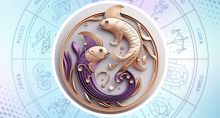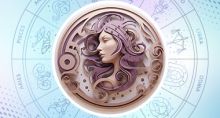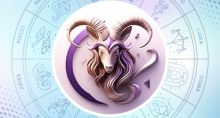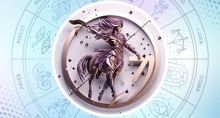5 Unique Ganesha Temples in Tamil Nadu
Lord Vinayaka, the elephant-headed deity and the son of Lord Shiva and Parvati, is much revered and loved in Hinduism. He is the deity who removes all obstacles and also grants wisdom, good fortune, and abundance. He has a large following in the state of Tamil Nadu, where one can see small Vinayaka temples in most streets.
Apart from these, there are also other large and renowned Ganesha temples in the state. Some notable temples include Ucchipillayar Temple in Rockfort, Trichy, Mukkuruni Vinayakar of Madurai, and Karpaga Vinayakar temple of Pillayarpatti, among others.
In this blog, we will learn more about some lesser-known Ganesha temples that are interesting in their own way.
Here are five such Vinayaka Temples in Tamil Nadu.
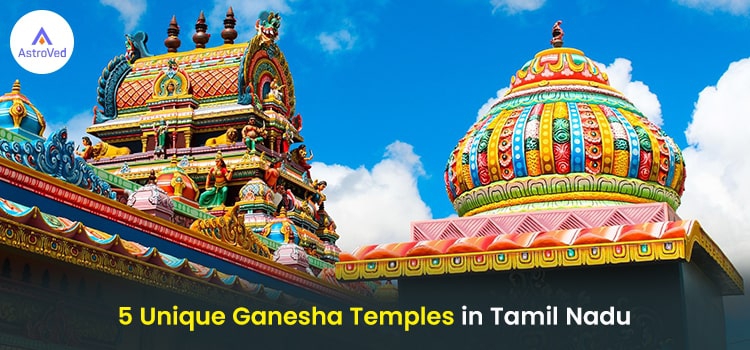
1. Aadhi Vinayaka Temple, Thilatharpanapuri, Koothanur
The Vinayakar in this temple, called Aadhi Vinayagar, is unique because he has a human face. He graces devotees in Muktheeswarar Temple, Thilatharpanapuri, near Koothanoor. The place is called Thilatharpanapuri as it is auspicious for performing the Pitru Karmas or ancestral rituals. ‘Thila’ means ‘gingelly oil,’ and ‘Tharpanam’ is a ritual for honouring ancestors.
This form is the ancient form of Vinayagar. This unique idol stands outside the temple. He is also called Naramukha Vinayaka (Nara means ‘human,’ and ‘Mukha’ means ‘face’).
Many are aware of the story behind Ganesha getting his elephant head. The story goes that Goddess Parvati created him using the dirt from her body, with a human head. But Shiva beheaded Vinayaka in a fit of anger. On seeing Parvati’s grief, he told his Ganas or followers to bring the head of anyone they found sleeping with the head placed towards the North. They could find only the head of an elephant calf. This head was placed on Vinayaka’s torso, and Shiva also gave him the name Ganesha. Thus, Naramukha Vinayaka is the first or original Vinayaka that Parvathi created. This is the only Vinayaka idol with a human face in Tamil Nadu.
2. Suyambu Selva Vinayaka, Shenbakkam, Vellore
This is a very interesting Vinayaka temple, where you find one idol of Vinayaka surrounded by 10 other Suyambu (self-manifested) Vinayaka idols. Together, they form an ‘OM’ shape. This feature makes it very unique.
The main deity here is the Suyambu Vinayaka, called Selva Vinayaka. Ten other Vinayakas of different sizes encircle the main idol. Being Suyambu moorthis, they resemble the Shiva Linga. The Suyambu Vinayakas have a silver Kavacham adorning them. The smallest is Bala Vinayaka. Devotees believe that the Vinayakas keep growing in size. This has been happening since they were dug out of the ground.
There is an interesting story about these Suyambu Vinayakas. When all these Suyambu Vinayakas were still under the ground, a minister of Maharashtra, by the name of Thukoji, was passing by this place. Suddenly, the axle of his chariot broke, and he saw blood oozing from the ground. The worried minister prayed to Lord Vinayaka and he stayed back there, that night.
Later, Vinayaka appeared in his dreams and told him where to look for him. The deity also told the minister to excavate all the idols and construct a temple there. One can still see the wheel impression of the chariot on the back of Selva Vinayakar. The sanctum does not have a roof. There is an idol of Shani Bhagwan facing Selva Vinayagar. All these make this temple very unique and a must-visit for all Ganesha/temple lovers.
3. Honey Absorbing Vinayaka Temple, Thiruppurambiyum, Kumbakonam
Locals and devotees call this Vinayaka, Pralayam Kaatha Vinayaka. One can find him in the Sakshinatheswarar Shiva Temple, the 46th Paadal Petra Sthalam. The idol of Lord Ganesha of this temple has a special significance. The name Pralayam Katha Vinayagar means ‘Vinayagar who saved the earth from destruction by the sea’. At the end of the Treta yuga, the seven seas destroyed the Earth. Shiva wanted to save this temple in Thiruppurambiyam and gave the work of preserving the temple to Ganesha.
Ganesha used the powers of ‘OM,’ the Pranava Mantra, and controlled the forces of the 7 seas and confined them to one well. Even today, one can see this well in the temple premises. People call the well Yezhu Kadal Kinaru. Supposedly, Varuna, the Rain God, installed the idol. According to local lore, he made this idol with things obtained from the sea - shells, snail hoods, oyster shells, and sea foam.
The night before Vinayaka Chaturthi, a special Abishekam of honey is performed to this Ganesha. Nearly 100 kg of honey is used for this purpose. During the Abishekam, the idol completely absorbs all the honey poured on it. It is a wondrous spectacle. When the Abishekam ends, the idol will acquire a crimson or golden color. Apart from the Honey Abishekam, no other Abishekam is performed to Ganesha.
4. Foam Swetha Vinayaka Temple, Thiruvalanchuzhi, Kumbakonam
At this temple, Ganesha is in the form of Shwetha or white Vinayaka, made of the ocean’s foam or froth. This is a Shiva temple, and the presiding deity is Periyanayaki Sametha Sadaimudinathar. The Cauvery River flows in a gentle curve towards the right side. Hence, people call this place Thiruvalanchuzhi (‘valam’ means ‘right’ and ‘chuzhi’ means ‘curve’).
Devotees believe that Lord Indra installed the idol here. When the gods were trying to get Amrit from the Milky Ocean, they forgot to worship Vinayaka. Usually, people worship Vinayaka first before beginning a new task. Because of this, the gods had to face many obstacles in getting the nectar. They encountered large waves in the ocean, and they found it very difficult to control the force of the waves. To overcome this, the gods formed an idol of Vinayaka using sea foam and worshipped Him. Since Swetha Vinayaka is made from sea foam, there is no Abisheka for him. Neither flowers nor vastras nor sandal are placed on the idol. Only powdered Pachai karpooram or raw camphor is sprayed on the idol without touching it.
5. Mundhi Vinayaka Temple, Puliyakulam, Coimbatore
The Vinayaka idol here is the largest in Asia. The forehead is 2.5 feet broad. The idol stands 19 feet 10 inches tall and is 11 feet 10 inches broad. It weighs around 190 tonnes. 21 talented sculptors worked for 6 long years to create this idol. Choosing the stone was not easy. A huge rock was used to carve the idol. It came from a place called Oothukuli in Coimbatore. The idol’s trunk curls to the right; hence, it is Valanchuzhi.
The idol of Ganesha has 4 hands. The lower right hand holds a piece of ivory representing the tusk he broke off to write the Mahabharata epic. There is an Angusa in his upper right hand, a jackfruit in the lower left hand, and in his upper left hand, a whip. He also has a pot of nectar in his trunk. This is the sign of Goddess Lakshmi. The idol is mounted on a phallus designed as a lotus. There is also a lotus in his left foot. The serpent Vasuki forms a belt around His hip. This indicates that one can get relief from the ill effects of Rahu and Ketu by worshipping this Ganesha. The idol reposes under an Arasa Maram.









